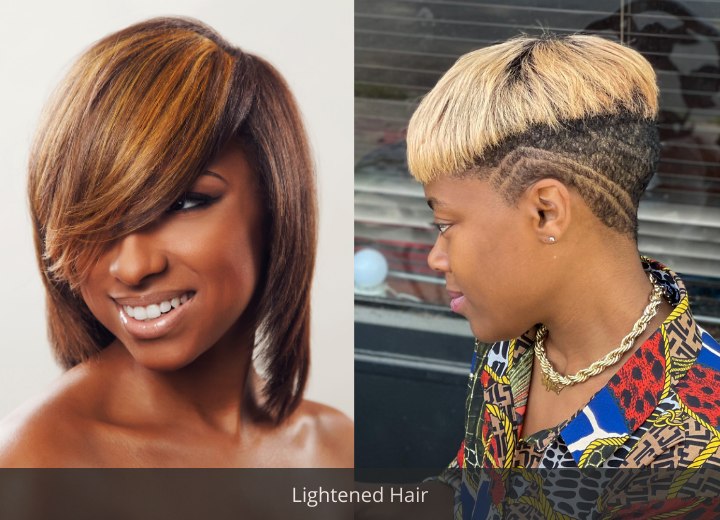The Special Needs of African-American Hair

African-American hair (which we will refer to as ethnic hair for the purposes of this discussion) also tends to be porous, meaning that moisture can easily pass through the cuticle layer of the hair. You see, since ethnic hair tends to be coarse, the cuticle layer of the hair shaft tends to be raised, meaning that it can readily absorb moisture but also loses it easily.
Common Ethnic Hair Issues:
As mentioned above, one of the common problems of ethnic hair is dryness. For this reason, products designed for ethnic hair are formulated with intense moisturizers, oils, and fats to help hydrate and lock in moisture.
According to a national (American) study, the number one problem faced by women with ethnic hair is breakage. 60% of Black women identified breakage as their number one problem. While the natural tendency towards dryness doesn't help, the major contributor to the problem of hair breakage among women with ethnic hair is the methods used to style it. Approximately 80% of Black women use some method to straighten their hair, ranging from chemical processes such as relaxers and soft-curl perms to the use of heat-styling appliances like irons and blow-dryers.
Chemical relaxers are strong formulas that break the disulfide bonds of the hair allowing it to lie straight. Common relaxers contain strong alkalis that can swell the hair up to twice its normal size, and with hydroxide relaxers, the bonds that are broken are permanently broken. Soft curl perms are processes designed to make the natural curl of the hair more pronounced. Both relaxers and soft curl perms are very damaging to the hair.
Heat styling is another process that is especially hard on ethnic hair. The curling irons, flat irons, and straightening combs commonly used can use heat as high as 400 degrees. Even hair dryers used for straightening use sufficient heat to leach much of the needed moisture from the hair.
Other Ethnic Hair Hazards:
Another chemical process that can seriously damage ethnic hair is coloring. Because ethnic hair is traditionally black (level 1), nearly all hair color changes require some degree of lightening (bleaching), which can be very damaging to the hair if not done carefully. It is generally recommended that hair color not be lifted more than four to five levels from the natural color, which does limit the color choices available to women with ethnic hair.

It is important to remember that damaged hair cannot be "cured". The only option is to treat the hair with products that will protect it from further damage and help the hair to look healthy. Consider this when you are thinking of trying to lighten your hair. The first time you run your fingers through your hair and pull away with a handful of broken ends, it will be too late.
All of these processes lead to stressed and weakened hair, prone to breakage. Because of this, ethnic hair undergoing these processes must be treated frequently to strengthen it with proteins, rehydrate it with moisture, and seal it against moisture loss. It is also imperative that the products used with ethnic hair reflect these needs. There are many products currently available for ethnic hair, and the hair care industry is constantly releasing new product lines.
Recommendations:
In the case of ethnic hair, it is important to use a gentle shampoo and conditioner containing moisture-rich ingredients and to condition the hair every day, even when not shampooing. It is also important to use a light, oil-based treatment to lock in the moisture and prevent damage from styling. This becomes especially important if you use heated appliances. Finally, consider a deep-conditioning treatment at least once a week and protein treatments at least once a month.
By taking careful attention to the needs of ethnic hair, you can be assured that you will have healthy hair that you can be completely satisfied with.
©Hairfinder.com